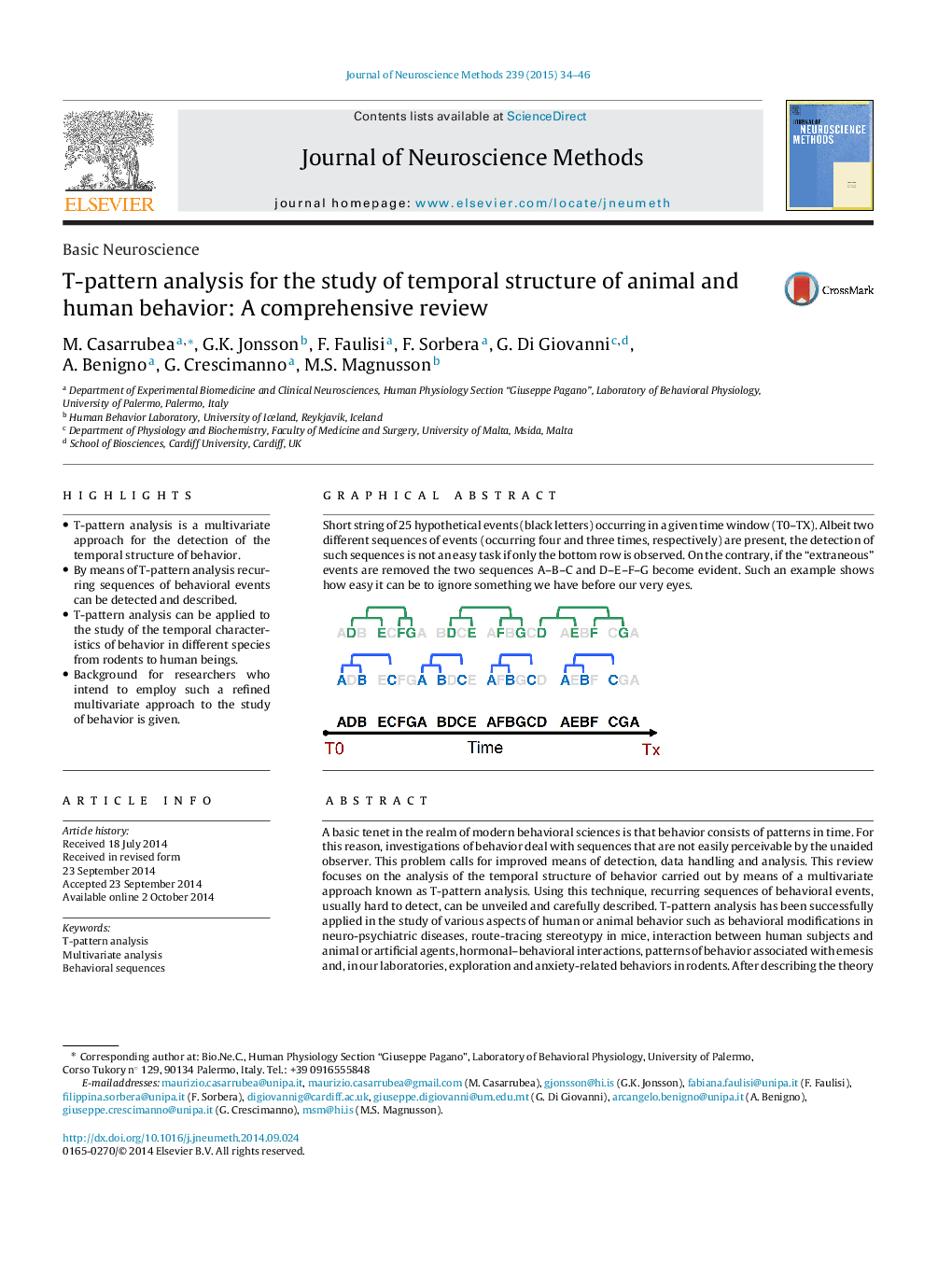| Article ID | Journal | Published Year | Pages | File Type |
|---|---|---|---|---|
| 6268520 | Journal of Neuroscience Methods | 2015 | 13 Pages |
â¢T-pattern analysis is a multivariate approach for the detection of the temporal structure of behavior.â¢By means of T-pattern analysis recurring sequences of behavioral events can be detected and described.â¢T-pattern analysis can be applied to the study of the temporal characteristics of behavior in different species from rodents to human beings.â¢Background for researchers who intend to employ such a refined multivariate approach to the study of behavior is given.
A basic tenet in the realm of modern behavioral sciences is that behavior consists of patterns in time. For this reason, investigations of behavior deal with sequences that are not easily perceivable by the unaided observer. This problem calls for improved means of detection, data handling and analysis. This review focuses on the analysis of the temporal structure of behavior carried out by means of a multivariate approach known as T-pattern analysis. Using this technique, recurring sequences of behavioral events, usually hard to detect, can be unveiled and carefully described. T-pattern analysis has been successfully applied in the study of various aspects of human or animal behavior such as behavioral modifications in neuro-psychiatric diseases, route-tracing stereotypy in mice, interaction between human subjects and animal or artificial agents, hormonal-behavioral interactions, patterns of behavior associated with emesis and, in our laboratories, exploration and anxiety-related behaviors in rodents. After describing the theory and concepts of T-pattern analysis, this review will focus on the application of the analysis to the study of the temporal characteristics of behavior in different species from rodents to human beings. This work could represent a useful background for researchers who intend to employ such a refined multivariate approach to the study of behavior.
Graphical abstractShort string of 25 hypothetical events (black letters) occurring in a given time window (T0-TX). Albeit two different sequences of events (occurring four and three times, respectively) are present, the detection of such sequences is not an easy task if only the bottom row is observed. On the contrary, if the “extraneous” events are removed the two sequences A-B-C and D-E-F-G become evident. Such an example shows how easy it can be to ignore something we have before our very eyes.Download full-size image
